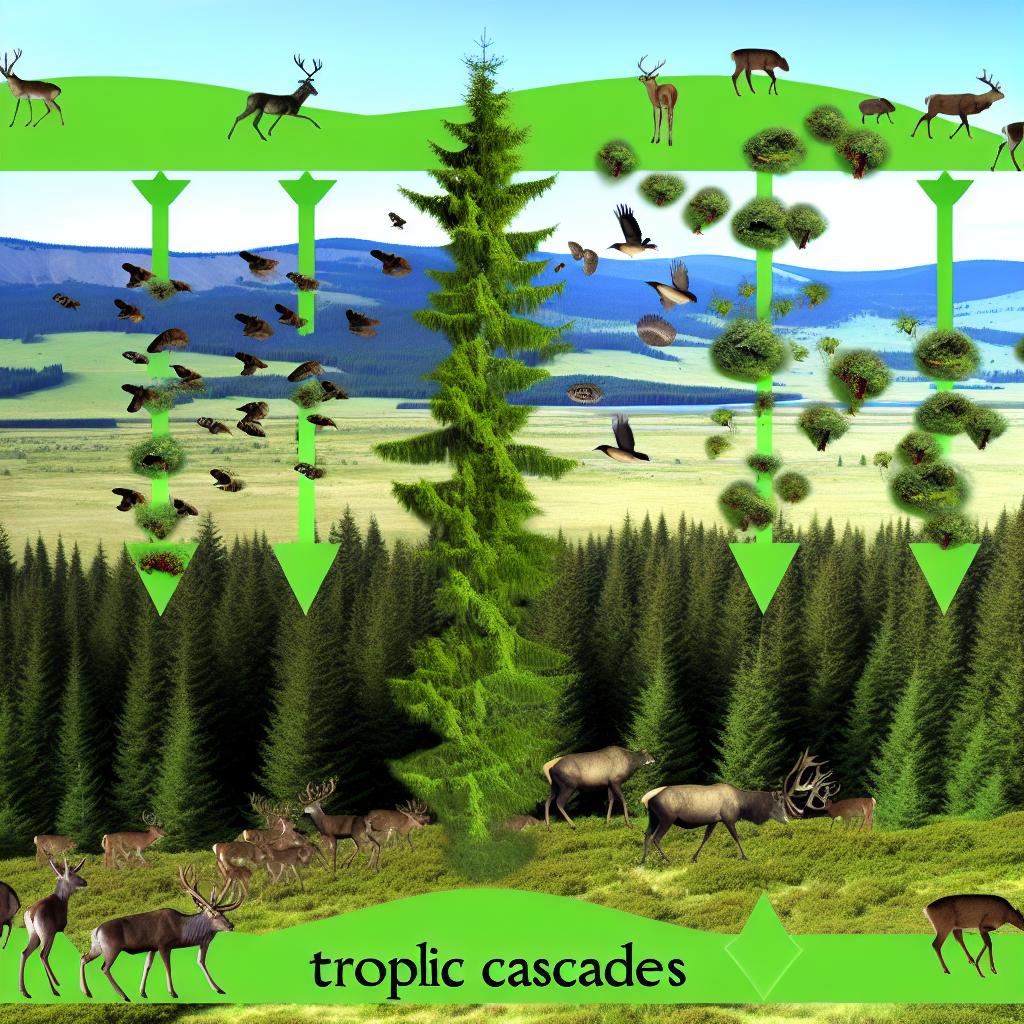
Rewildering and the Concept of Trophic Cascades
Understanding Rewildering
Rewildering is emerging as a significant conservation approach aimed at restoring and protecting natural processes and core ecosystems. Unlike traditional conservation strategies that often focus on preserving individual species or habitats, rewildering takes a broader perspective by attempting to restore entire ecosystems to their natural, self-regulating states. This method typically involves the reintroduction of native species and the removal of human influences, such as roads and buildings, allowing nature to flourish without constant human interference. The ultimate goal of rewildering is to restore ecological integrity and enhance biodiversity across landscapes.
Restoration of Natural Processes
Natural processes refer to the dynamics that occur in an ecosystem without human influence, including predator-prey relationships, plant growth, and natural disturbances like fires or floods. Rewildering seeks to restore these processes by emphasizing minimal human intervention, thereby allowing ecosystems to function as nature intended. For example, by reinstating animals that have traditionally been part of the ecosystem but were removed or went extinct due to human actions, these initiatives hope to reinstate the natural mechanisms that sustain biodiversity.
The Concept of Interconnected Ecosystems
An essential concept in rewildering is the recognition that ecosystems are intricately interconnected. The loss or reintroduction of key species can have profound impacts not just locally, but across entire ecosystems. This interconnected nature of ecosystems leads to the discussion of trophic cascades, which can be either beneficial or detrimental depending on how they unfold.
What Are Trophic Cascades?
Trophic cascades refer to the ecological phenomenon that emerges when changes at one level of the food chain lead to consequences for other levels. This often happens through the addition or removal of a top predator, which then influences prey populations, plant communities, and even nutrient cycling processes within an ecosystem. The restoration of these trophic relationships is crucial in rewildering projects as they can lead to substantial ecological balance and restoration of natural biodiversity.
Case Study: Wolves in Yellowstone
A well-documented example of a trophic cascade is illustrated by the reintroduction of wolves to Yellowstone National Park in the United States. For much of the 20th century, wolves were absent from the park, primarily due to hunting and habitat degradation. Their absence allowed elk populations to burgeon unchecked, resulting in extensive overgrazing that hampered the growth of young trees and plants. However, upon the reintroduction of wolves, the ecosystem began to recover. By preying on elk populations, wolves instigated a decline in overgrazing, which allowed tree saplings to mature into full-grown trees, thus promoting a more balanced and diverse ecosystem. This example underscores the extensive ripple effects one species can have throughout an ecological network.
The Role of Keystone Species
In both rewildering and understanding trophic cascades, the concept of a keystone species is integral. These are not necessarily the most abundant species in an ecosystem but have disproportionate influences on their environment. Their presence or absence can lead to significant shifts in ecosystem structure and function. The aforementioned reintroduction of wolves in Yellowstone serves as an excellent case where a keystone species helped to reinstate ecological equilibrium. By controlling prey populations, keystone species help regulate the distribution and abundance of other organisms within the ecosystem, thereby sustaining the overall health and resilience of the environment.
Challenges and Considerations
While rewildering and understanding trophic cascades offer substantial promise for conservation efforts, the path is fraught with challenges. Factors such as climate change pose a significant threat, altering habitats and making it difficult to predict how ecosystems will respond to changes like the reintroduction of species. Invasive species, which can outcompete native ones for resources, also present a hurdle by disrupting the delicate balance that rewildering aims to achieve. Habitat fragmentation caused by human developments further complicates efforts to restore natural ecosystems to their full potential.
Additionally, the human component cannot be overlooked in rewildering efforts, especially where projects border human communities. Reintroduced species, such as large predators, may lead to potential conflicts, necessitating strategies to mitigate human-wildlife conflicts. Engaging local communities through dialogue and collaboration is essential for addressing fears and garnering support for rewildering initiatives.
Moreover, successful rewildering projects are long-term endeavors requiring substantial time and resources. Strategic planning is critical, alongside community engagement and comprehensive monitoring over time to ensure initiatives are successful and sustainable.
Looking Forward
Rewildering and the study of trophic cascades offer invaluable insights into creating more resilient and biodiverse environments. By prioritizing natural processes and key species, these approaches present a pathway to mitigating biodiversity loss and restoring ecological functions disrupted by prolonged human activity. There is a growing body of evidence suggesting that healthier ecosystems foster numerous benefits, not only for biodiversity but also in terms of providing vital ecosystem services that affect human welfare.
As the movement gains momentum, it is critical to continue research into the complex interactions within ecosystems and to implement innovative solutions to overcome existing challenges. The resilience of ecosystems against climate change and other anthropogenic pressures can be significantly bolstered through informed rewildering strategies.
By understanding and supporting these natural dynamics, the benefits ripple beyond environmental advantages—contributing to a more sustainable and harmonious coexistence between humans and nature. Consider exploring resources dedicated to conservation science and ecology for more information on these concepts. Rewildering presents a promising avenue to foster a future where ecosystems can thrive naturally, for the benefit of all.